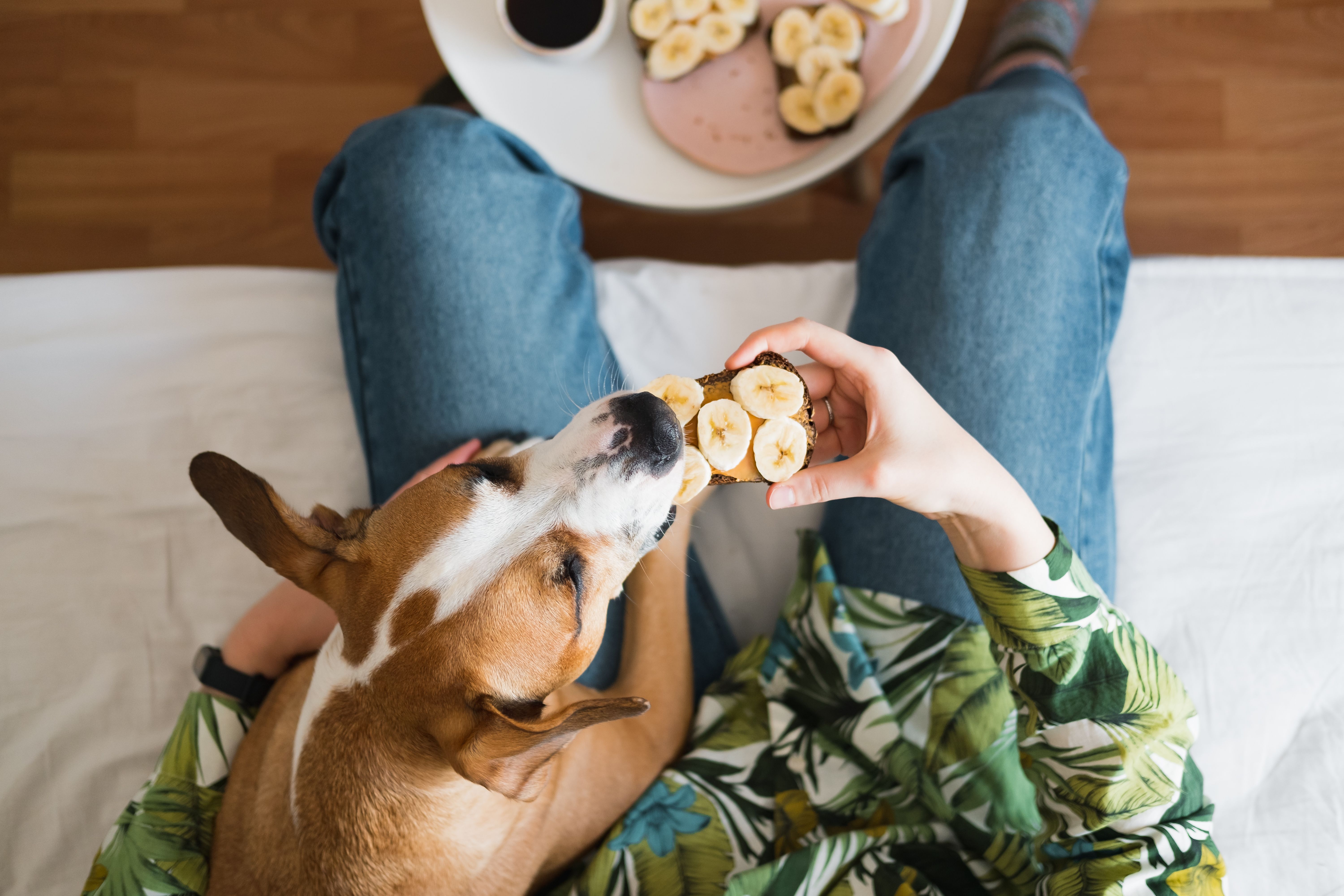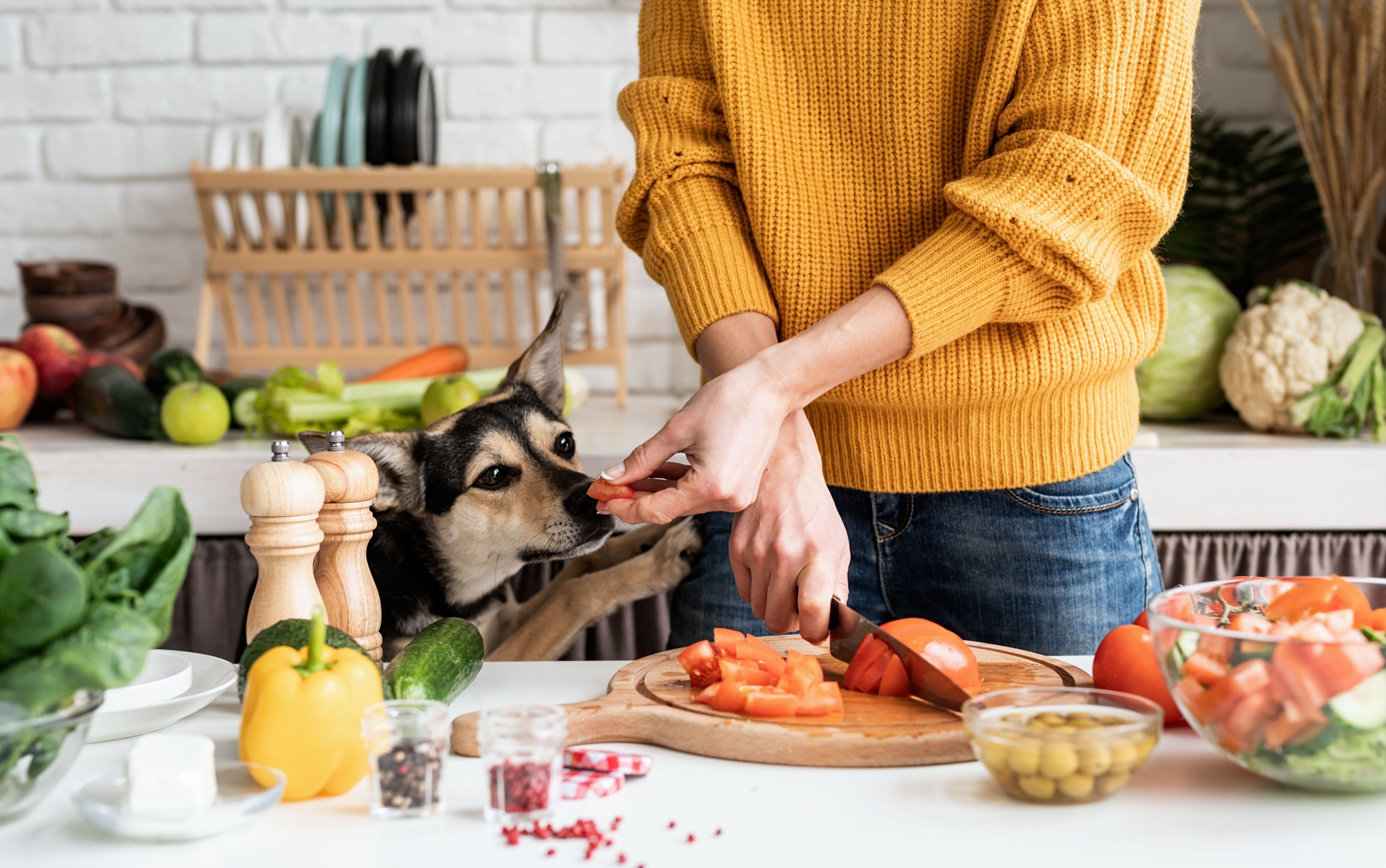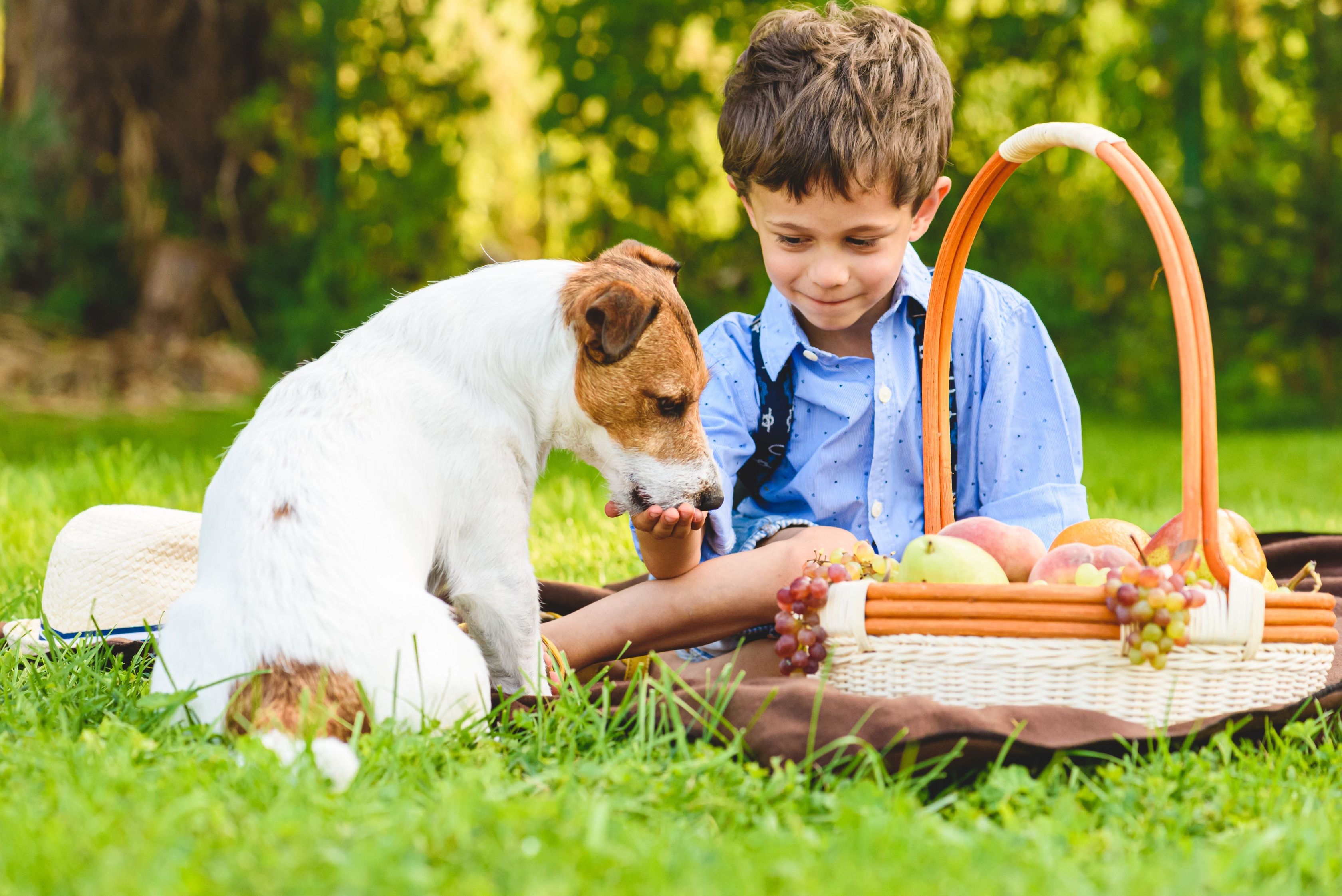Sharing food with our dogs is one of the simplest joys of being a pet parent. But as tempting as it is to toss a snack to those eager eyes, caution is essential. Not all human foods are safe for dogs. One fruit that often raises questions is persimmons.
Can dogs eat persimmons? The short answer is yes, but there are a few things to consider. This guide will cover the benefits, risks, and best ways to safely share persimmons with your furry friend.
What Are Persimmons?

Ingredients and process of making a vitamin winter salad with persimmons, tangerines and cheese.
Persimmons are sweet, orange-colored fruits enjoyed in fall and winter. They have a flavor similar to apricots or honey. The two most common types are Fuyu and Hachiya. Fuyu persimmons are firm and eaten like apples, while Hachiya persimmons are softer with a jelly-like texture when ripe. Both varieties are rich in vitamins and minerals, making them a healthy treat for humans—but what about dogs?
The Health Benefits of Persimmons for Dogs

Young woman takes some food from a fridge filled with healthy vegetables.
When prepared properly, persimmons can offer health benefits and serve as a nutritious snack. They are rich in Vitamin A, which supports vision, skin health, and the immune system. They also contain Vitamin C, an antioxidant that reduces inflammation and promotes overall health. Potassium in persimmons supports heart function and muscle activity. Additionally, their high fiber content aids digestion and helps with irregular bowel movements. Persimmons are also low in fat, making them a guilt-free treat for dogs on a low-fat diet.
Potential Risks of Persimmons for Dogs

A dog lying on the sofa in bad mood.
While persimmons are generally safe, some risks exist. The seeds and core are hard to digest and could cause intestinal blockages, especially in small dogs. Always remove them before offering persimmons to your pet. Large fruit pieces can also be a choking hazard, so cutting them into small bites is crucial. Although natural sugars in persimmons are healthier than processed ones, they can still be too much for dogs with diabetes or weight issues. Moderation is key. Feeding too much persimmon may lead to digestive upset, including diarrhea or an upset stomach. Introduce the fruit slowly to ensure your dog has no adverse reactions.
How to Safely Give Persimmons to Your Dog

Preparing Meal Food For Pet Dog.
If you decide to share persimmons with your dog, follow these steps for safety. Wash the fruit thoroughly to remove pesticides and contaminants. Remove all seeds and the core to prevent choking and digestive issues. Cut the fruit into small, bite-sized pieces for easy chewing. Start with a small piece and monitor your dog for any reactions, such as vomiting, diarrhea, or unusual behavior. Remember, persimmons should be an occasional treat, not a daily snack, as too much fruit can disrupt your dog’s diet.
Signs Your Dog Shouldn’t Eat Persimmons

The veterinarian listens to the dog with a stethoscope.
Not all dogs tolerate persimmons well. Dogs with diabetes, obesity, or strict low-sugar diets should avoid them. Those with frequent digestive issues, such as diarrhea or vomiting, may also struggle to digest persimmons. If you’re unsure whether persimmons suit your dog’s health, consult your veterinarian.
Alternatives to Persimmons

Sharing a peanut butter and banana sandwich with a dog.
If persimmons aren’t the best fit, plenty of other dog-friendly fruits are available. Blueberries are rich in antioxidants and low in sugar. Apples are another great option, but remove the seeds and core first. Bananas make an excellent low-fat snack, and most dogs love them. Watermelon is hydrating and refreshing, though the seeds and rind should be avoided. These alternatives offer nutrition with minimal risk.
Things to Remember

Woman giving a piece of a vegetable to a dog.
Moderation is essential when feeding persimmons to your dog. Even healthy treats should not exceed 10% of their daily calorie intake. Proper preparation is also important—always remove seeds and the core and cut the fruit into small pieces. By following these simple steps, you can ensure that persimmons, or any new food, are a safe and enjoyable addition to your dog’s diet.
Sharing fruit is a great way to bond with your dog while introducing them to new flavors. Persimmons can be part of their treat repertoire—just handle them with care and keep portions small. Always observe caution and consult your veterinarian before modifying your dog’s diet.







Leave A Comment